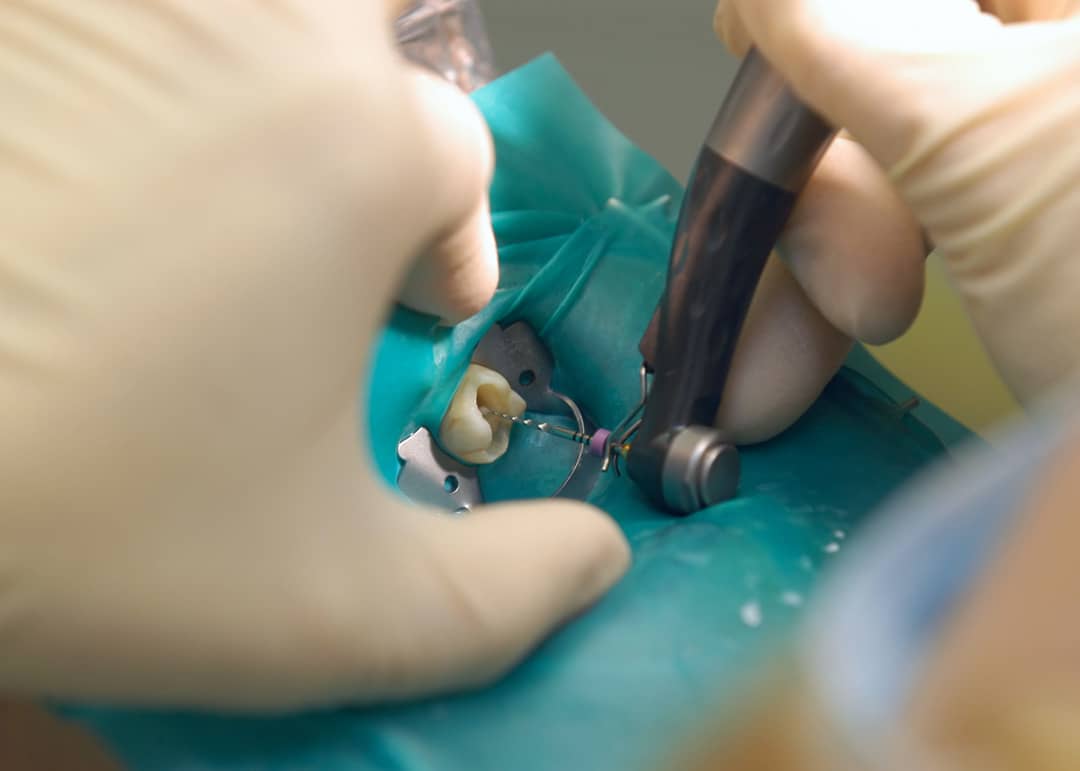When a dentist mentions “root canal”, many patients shudder because their first thoughts are pain and huge dental fees. But do we really know what this root canal is? In this article, you will find out what the subject really is, the symptoms, and how to prevent it. You will also know what the procedure entails.
What is a Root Canal Treatment?
Let’s get this clear. A root canal isn’t a treatment, but a part of your teeth. It is a hollow section that houses blood vessels, nerve tissue, and many cells. You can also call it “the pulp”.
The first and outer layer of the teeth is the enamel layer. The second is the dentin, followed by a soft inner core that moves down to the root inside the jawbone. It is this core that contains the pulp.
When there is decay in that section, the pulp becomes infected or inflamed, or necrotic, and a procedure is required to remove the decay. The procedure which many people refer to as root canal is called endodontic therapy. However, a root canal is commonly used to describe the procedure.
Root Canal Treatment Procedure
The treatment is done in 3 steps. It also requires 1 to 3 sessions to finish the entire procedure.
Step 1
The first thing the dentist does is remove everything in the canal. You will be placed under anesthesia, so you won’t feel any pain when a hole is bored on your tooth surface. The dentist will remove the diseased pulp tissue using small files.
Step 2
The second step involves cleaning, shaping, and decontaminating the infected spot. A rubber material together with an adhesive will be used to fill up the tooth and seal the canal. After the procedure, the tooth becomes dead. This implies that you will not feel pain there anymore because there is no nerve tissue inside the tooth.
Step 3
The tooth is now very fragile because it has no pulp. However, it must get nutrients from its ligament. But this will only suffice for a short while. As a result, you need to go for filling or fixing of a crown to offer protection to the tooth.
After getting the crown or filling, you should not bite or chew on that tooth. This treatment will likely take one appointment except it is a case of large infections, curved canals, or multi-canals.
Is a Root Canal Treatment Painful?

The name of the procedure sounds like terrible pain but thanks to technology, some invasive procedures are becoming less scary. The treatment is not totally different from when you go in for a deep filling and you will experience very little or no pain at all. The dentist will numb your gums and teeth with local anesthesia to make you feel comfortable.
Furthermore, if your face is swollen or you have a fever, the dentist will prescribe antibiotics to take care of the infection before you undergo treatment. This will help to ease the pain. Although the treatment procedure is almost like tooth filling, it takes a longer time. The dentist will clean the decay, disinfect the roots, then fill them in.
The dentist will also use a dam around the canal of the infected tooth to prevent infected materials from moving to other parts of the mouth. After the procedure, your mouth will feel tender or sore and the dentist may prescribe a pain medication like ibuprofen or acetaminophen. You can visit https://freedomdental.ie/root-canal-treatment/ to learn about the benefits of undergoing the procedure.
Telltale Signs You Need Root Canal Treatment
You can know whether you need this treatment by visiting your dentist. However, there are many warning signs.
1. Tooth Discoloration
Your tooth may discolor when the pulp is infected. When the tooth is impacted or there is a breakdown in the internal tissues, the roots may damage, leading to a grey-black appearance. You can easily see the discoloration on the anterior tooth. Although this discoloration may have other causes, you still need to see a dentist when you notice it.
2. Persistent Pain
You may feel pain in the teeth occasionally or it may become constant, causing you worries. You may feel it deep down your teeth, jaw, or face. This pain may be caused by many factors other than the root canal. The possibilities include:
- Infection on a tooth that was impacted
- Damaged filling
- Pain from sinus infections
- Cavity
- Gum disease
Whatever causes the pain, you need to visit your dentist immediately, particularly if it is persistent. Diagnosing and treating problems on time results in better outcomes.
3. Cold and Heat Sensitivity
Your teeth may hurt when consuming a cold bottle of water or ice cream. They may even become sensitive when taking hot or warm food or drink. The sensitivity may feel like a striking pain or a dull one. If this lingers for a longer time, even after drinking or eating, you may need to undergo root canal therapy.
4. Pain While Eating or Touching the Tooth
If your teeth are sensitive when you are eating or touching them, that is a serious indicator of nerve damage or tooth decay. This will require root canal treatment, especially if the sensitive feeling continues for a long time and does not resolve when you are no longer eating.
When a tooth is infected, the ligament within the tip of its root becomes hypersensitive because the pulp is dying. This pulp will generate some waste products that will irritate the ligament, resulting in pain when you bite or chew.
5. Swollen Gums
When your gum is swollen coupled with pain in the tooth, it is an indication that something is not right in the pulp. The swelling may disappear after a while or feel tender or may not even be painful when you touch it. This swelling is because of acidic debris of dead tissues in the pulp.
Additionally, you may notice a small pimple on the gum, which is known as an abscess, gum boil, or parulis. Some pus may ooze from the pimple due to tooth infection. This will give you bad breath and a nasty taste. Also Read – How to Choose Health Advantage Plans to Your Needs.
6. Teeth Mobility
Infected teeth may feel loose but other factors apart from pulp necrosis may cause this problem. However, it is a symptom of root canal issues. Acidic debris from the necrosis softens the bones in the teeth roots, causing mobility. Therefore, if you feel one or more teeth have become loose, you should check with your dentist.
7. Cracked or Chipped Tooth
Your tooth may crack or chip during an accident, when you chew something hard, or in a sport. This can pave way for bacteria to come in, resulting in infection and inflammation. Even if the tooth does not crack or chip but becomes injured, the tooth nerves may be damaged. The nerves will be inflamed, causing sensitivity and pain.
Preventing Root Canal

Certain unhealthy dental habits are responsible for root cavities and other dental problems. Therefore, to prevent its occurrence, you must adopt healthy dental habits such as:
- Brushing at least two times each day.
- Flossing once or more every day.
- Using toothpaste containing fluoride or fluoride rinse.
- Visiting a dentist every six months for a checkup.
- Scheduling professional teeth cleaning procedures once each year.
- Limiting the number of refined carbohydrates and sugary food you eat. They are more likely to remain on the teeth, so ensure you brush or rinse shortly after consuming such foods.
You may feel pain after a root canal treatment. You can click here to find out why this may happen and what you can do about it.
Conclusion
A tooth infection causes pain and discomfort. If you experience persistent pain in your teeth or any of the other symptoms we discussed in this article, ensure you visit your dentist immediately. Root canal treatment is not painful and should not invoke any kind of fear in you.

